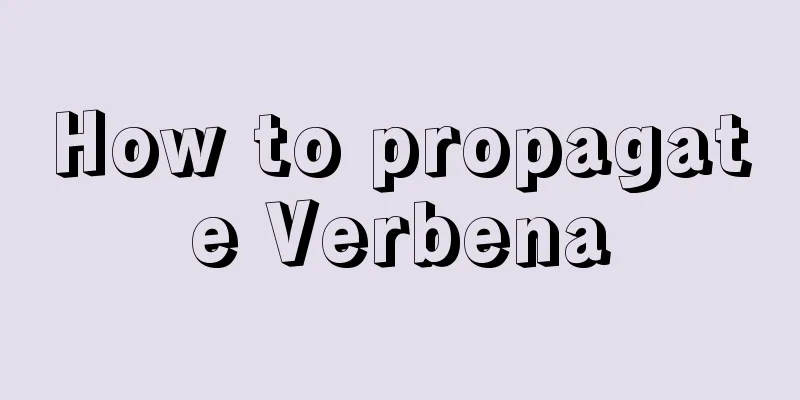How to propagate Verbena

1. Methods of propagating Verbena1. CuttingsYou can start taking cuttings of petunias in May and June, choosing a temperature around 15 degrees. Choose strong old branches of petunia, cut them into strips of five to six centimeters, and insert them into loose and moist sandy soil. Be sure to provide shade, and only allow a little sunlight after 2 to 3 days. A small amount of gentle light will encourage the growth of the cuttings, and roots and new shoots will appear in about two weeks. When the seedlings have grown five or six leaves, they can be transplanted and planted elsewhere. 2. Planting seedsThe germination rate of petunia seeds is very low, less than half. Moreover, the seedlings grown from seeds germinate slowly, have low quality, and do not grow well. The seeds should be sown at a temperature of about 16 degrees. After planting, they should be placed in a dark place immediately. While keeping the soil moist, make sure the air is not too dry. Generally, the seeds are sown in spring, and the petunias will bloom around July. 3. Daily management(1) FertilizationDuring the growing period of verbena, fertilizer should be applied for good development. The frequency is about once every half a month, and the fertilizer applied should not be too concentrated. (2) WateringThe roots of petunias are shallow, so special attention should be paid to the amount of water to avoid affecting the growth of petunias. During the hot summer, control the amount of watering to prevent drought. Watering too much or too little will be harmful to the growth of petunias. If there is too much water, the stems of the plants will grow thin and long, and the number of flowers will decrease. If you water too little, the plants will not grow well and will produce seeds prematurely. Verbena has strong disease and insect resistance. As long as there is adequate nutrition and proper water supply, the plant will grow healthy and strong, and diseases and insect pests will rarely occur. 2. Precautions during the cultivation of VerbenaVerbena prefers a cool environment and cannot tolerate extremely hot or cold environments. High temperatures and excessive direct sunlight will cause its leaves to shrink, branches to shorten, and growth to slow. |
<<: How to distinguish between Gaillardia and perennial Gaillardia?
>>: How to propagate white jade
Recommend
How to prune eucalyptus
When to prune eucalyptus According to the growth ...
Where do onion seeds come from?
How do onion seeds come from? Onions have seeds. ...
Luoyang Peony and Two Tang Dynasty Emperors
The story of Luoyang peony and Wu Zetian The firs...
How to propagate white chrysanthemum
Cutting propagation of white chrysanthemum The su...
The Flower Language of Blueberry
The Flower Language of Blueberry Plants need to b...
How to take cuttings of bougainvillea
The propagation methods of Bougainvillea include ...
How to keep seeds and breed Lipu taro
Lipu taro seeds If you want to preserve the seeds...
How to identify seven-leaf lily
1. Morphological identification Its plant height ...
How to grow lotus
1. Breeding environment 1. Light: Bowl lotus like...
Reasons and countermeasures for osmanthus not blooming
1. Poor sleep Osmanthus flowers need to be brough...
Do orchids like acidic soil?
1. Do you like acidic soil? Orchids like acidic s...
When is the best time to plant roses?
When is the best time to plant roses? Generally, ...
What do baby's breath seedlings look like? How to maintain?
Gypsophila paniculata , also known as cone stone ...
The flower language and symbolic meaning of cosmos
The flower language of cosmos Mawthorn is native ...
Where do tomatoes grow?
Tomatoes are red in color and are also called tom...









